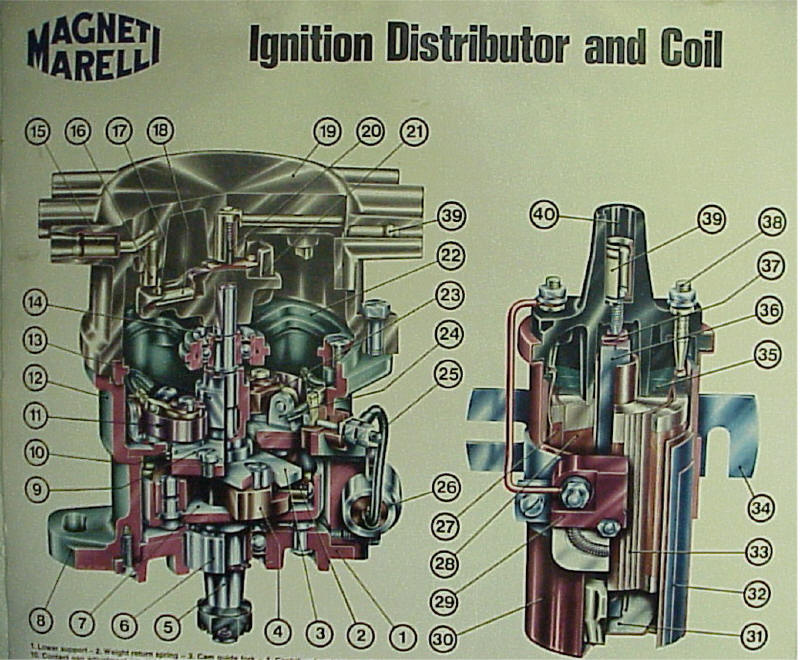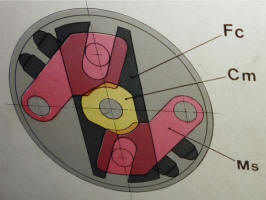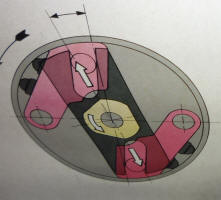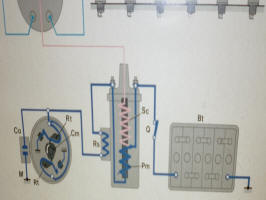Marelli Distributor Chart
I was at a garage tour at Carlos Durante's Alfa of Tacoma a couple of weeks
ago. On the wall was a picture and write-up of the Marelli distributor
used in most Ferrari V-12 engines. It gives quite a bit of detail that
can't be seen in the parts diagrams.

-
Lower support
-
Weight returning spring
-
Cam guide fork
-
Centrifugal weight
-
Drive shaft
-
Ball bearing
-
Weight carrier housing
-
Flange support
-
Breaker carrier plate
-
Contact gap adjustment cams
-
Breaker
-
Distributor body
-
Cam
-
Ball bearing
-
Ignition cable socket
-
Peripheral sector
-
Distributor comb
-
Noise suppression resistor
-
Cap
-
Brush
-
Rotor arm
-
Upper support
-
Breaker arm
-
Contact carrier brackets
-
L. T. terminal
-
Condenser
|
- Primary winding
- Secondary winding
- Wire resistor
- Metal cup
- Insulating bottom plate
- Magnetic skirt
- Insulating paper
- Bracket
- Insulating coil
- Magnetic core
- Current carrier spring
- L. T. terminal
- H. T. sockets
- Insulating cap
L. T. - Low Tension (12v)
H. T. - High Tension (Spark) |
The bottom of the chart has a section on operation and the automatic advance
device. However, I'm sorry to say that my picture wasn't clear enough for
me to read that information. I do expect to be back down there in a month
or two, so I'll take better pictures and update this page then.
Carlos used this chart during his tech talk to point out the weights and
springs in the bottom of the distributor. These frequently have old gunked
up grease on them and this prevents the automatic advance from working properly.
The test is to watch the advance using a timing light while advancing the
throttle to make sure that it's even (doesn't suddenly jump during RPM increase)
and that the total advance is correct at 5000-6000 RPM.
Here is the rest of the chart.

Weights completely closed:
ignition distribute at rest or
operating at very low speed. |

Weights complete open:
distributor operating at high speed. |

Two centrifugal weights, Ms, kept in the rest position by four
springs, are thrown out by the centrifugal force created by speed
and, acting on fork Fc of cam Cm, cause the cam itself to rotate so
that it opens the contacts earlier.
At any position assumed by the weights there is a corresponding
angular displacement of the cam which determines the advance as a
function of speed. |
